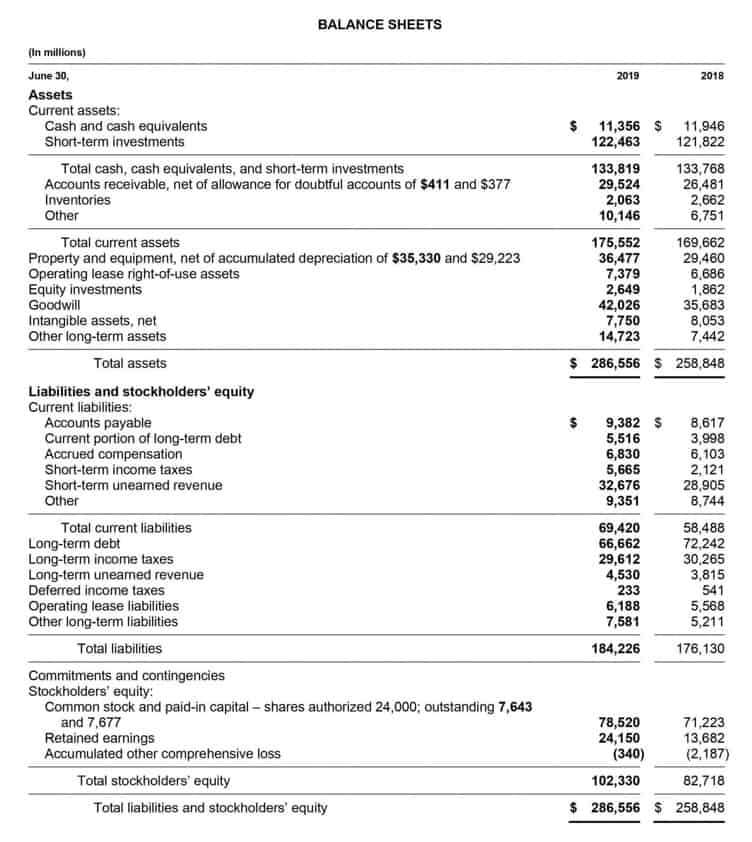Gearing ratios focus more heavily on the concept of leverage than other ratios used in accounting or investment analysis. The underlying principle generally assumes that some leverage is good, but that too much places an organization at risk. To get a clearer picture and facilitate comparisons, analysts and investors will often modify the D/E ratio. They also assess the D/E ratio in the context of short-term leverage ratios, profitability, and growth expectations. Lenders consider the outstanding balance as part of the overall value equation, subtracting it from the appraised value to arrive at your available home equity.
Welcome to the new Quicken Loans, the cutting-edge online marketplace transforming the way you find financial providers.
What is Shareholder’s Equity?
If a company doesn’t wish to hang on to the shares for future financing, it can choose to retire the shares. The equity ratio is a financial metric that measures the amount of leverage used by a company. It uses investments in assets and the amount of equity to determine how well a company manages its debts and funds its asset requirements. The Total Equity Calculator is used by businesses, investors, and financial analysts to assess the financial health and value of an entity.
- The amount you can borrow depends on factors like your credit score and income.
- I suppose if I had given a prediction on the quality of my predictions, it would have included one good, one bad, and one in the middle, which is exactly what happened.
- A company’s equity is used in fundamental analysis to determine its net worth.
- For example, if you’re remodeling your garage, you might first pay a contractor to redo the floor, later buy and install new cabinets, and finally hire a painter.
- The liabilities to be aggregated for the calculation are accounts payable, accrued liabilities, short-term debt, unearned revenue, long-term debt, and other liabilities.
Some new companies do not issue dividends because it is more important to retain all of their earnings to expand business operations. What remains after deducting total liabilities from the total assets is the value that shareholders would get if the assets were liquidated and all debts were paid up. The above formula is known as the basic accounting equation, and it is relatively easy to use. Take the sum of all assets in the balance sheet and deduct the value of all liabilities. Total assets are the total of current assets, such as marketable securities and prepayments, and long-term assets, such as machinery and fixtures.
What is the Equity Ratio?
This calculation provides insights into the net value or worth of the entity. Shareholders’ equity is an essential metric to consider when determining the return being generated versus the total amount invested by equity investors. These figures can all be found on a company’s balance sheet for a company. For a homeowner, equity would be the value of the home less any outstanding mortgage debt or liens. For instance, in looking at a company, an investor might use shareholders’ equity as a benchmark for determining whether a particular purchase price is expensive. On the other hand, an investor might feel comfortable buying shares in a relatively weak business as long as the price they pay is sufficiently low relative to its equity.
I suppose if I had given a prediction on the quality of my predictions, it would have included one good, one bad, and one in the middle, which is exactly what happened. Of course, the ratio is inadequate to understand the fundamentals of a company and should be evaluated in conjunction with other https://www.bookstime.com/ metrics. Given the enterprise value, one can work backward to calculate equity value. Alternatively, it can be derived by starting with the company’s Enterprise Value, as shown below. Using this rule, here’s the maximum amount you can expect to borrow with different amounts of home equity.
How Is Equity Calculated?
The most common use of equity value is to calculate the Price Earnings Ratio. While this multiple is the most well known to the general public, it is not the favorite of bankers. The reason for this is that the P/E ratio is not capital structure neutral and is affected by non-cash and non-recurring charges, and different tax rates. However, there are certain industries where the P/E ratio and equity value are more meaningful than enterprise value and its multiples. These industries include banks, financial institutions, and insurance firms.
- Upgrading to a paid membership gives you access to our extensive collection of plug-and-play Templates designed to power your performance—as well as CFI’s full course catalog and accredited Certification Programs.
- It is very important to understand the difference between equity value and enterprise value as these are two very important concepts that nearly always come up in finance interviews.
- Current assets are assets that can be converted to cash within a year (e.g., cash, accounts receivable, inventory).
- For instance, in looking at a company, an investor might use shareholders’ equity as a benchmark for determining whether a particular purchase price is expensive.
- Retained earnings are the portion of net income a company retains once dividends are paid to shareholders.
- The above formula sums the retained earnings of the business and the share capital and subtracts the treasury shares.
The account demonstrates what the company did with its capital investments and profits earned during the period. Shareholders’ equity refers to the owners’ claim on the assets of a company after debts have been settled. The first is the money invested in the company through common or preferred shares total equity formula and other investments made after the initial payment. The second is the retained earnings, which includes net earnings that have not been distributed to shareholders over the years. Total stockholders’ equity represents the company’s remaining value after liabilities are subtracted from assets.
How business type impacts owner’s equity
Corporations with many years of profitability typically hold a large amount in retained earnings. Although a large amount in the account is viewed as a positive sign, it doesn’t necessarily mean the company’s cash account is equally as large. The retained earnings portion reflects the percentage of net earnings that were not paid to shareholders as dividends and should not be confused with cash or other liquid assets. The number of shares issued and outstanding is a more relevant measure than shareholder equity for certain purposes, such as dividends and earnings per share (EPS). This measure excludes Treasury shares, which are stock shares owned by the company itself.
Finally, sum the present values of dividends and the present value of the terminal value to calculate the company’s net present value per share. For intrinsic valuation, dividend discount models are used instead of a traditional DCF model (a form of financial modeling). A dividend discount model is based on projecting a company’s dividends per share using projected EPS. It involves discounting these dividends using the cost of equity to get the NPV of future dividends. When using D/E ratio, it is very important to consider the industry in which the company operates. Because different industries have different capital needs and growth rates, a D/E ratio value that’s common in one industry might be a red flag in another.



